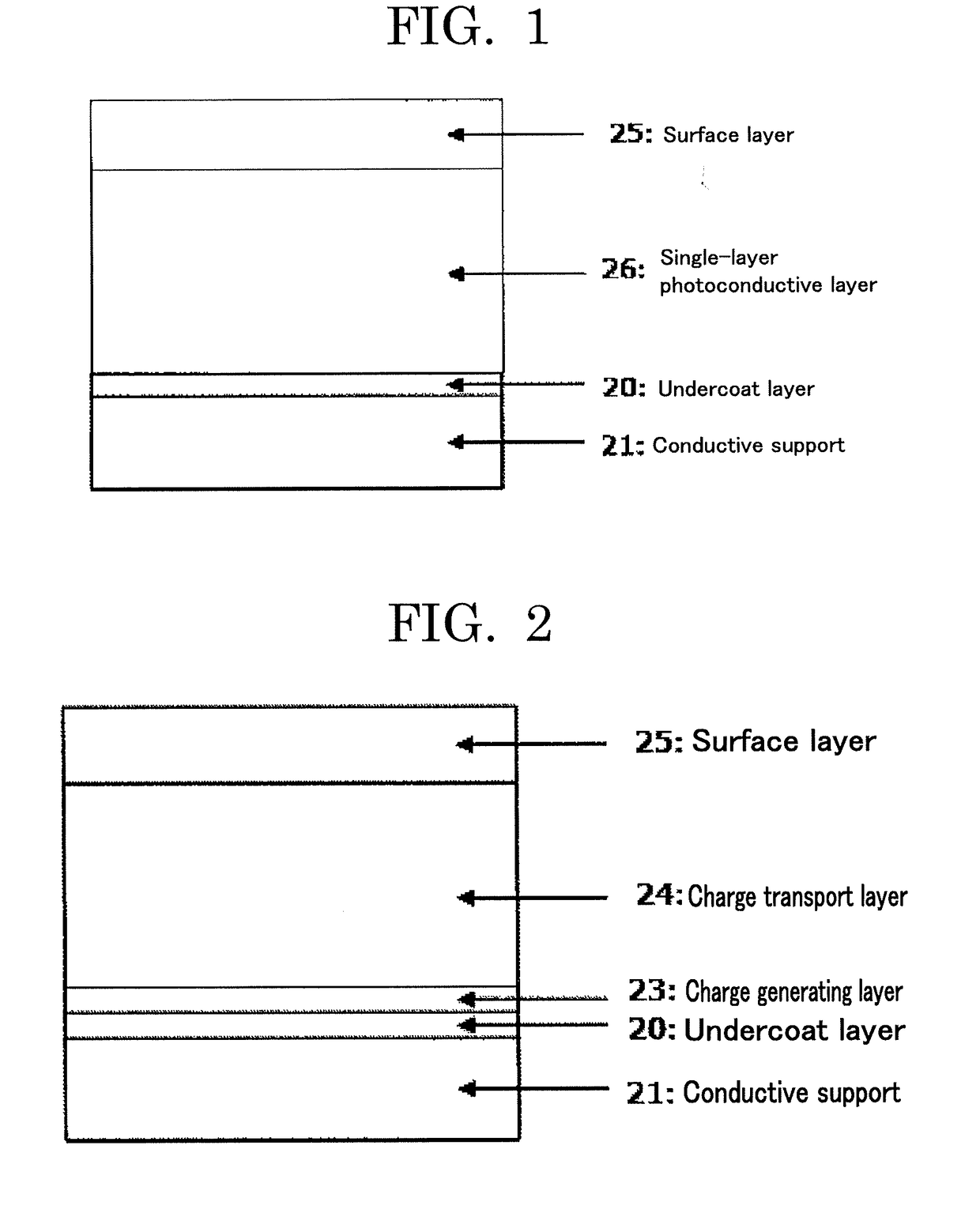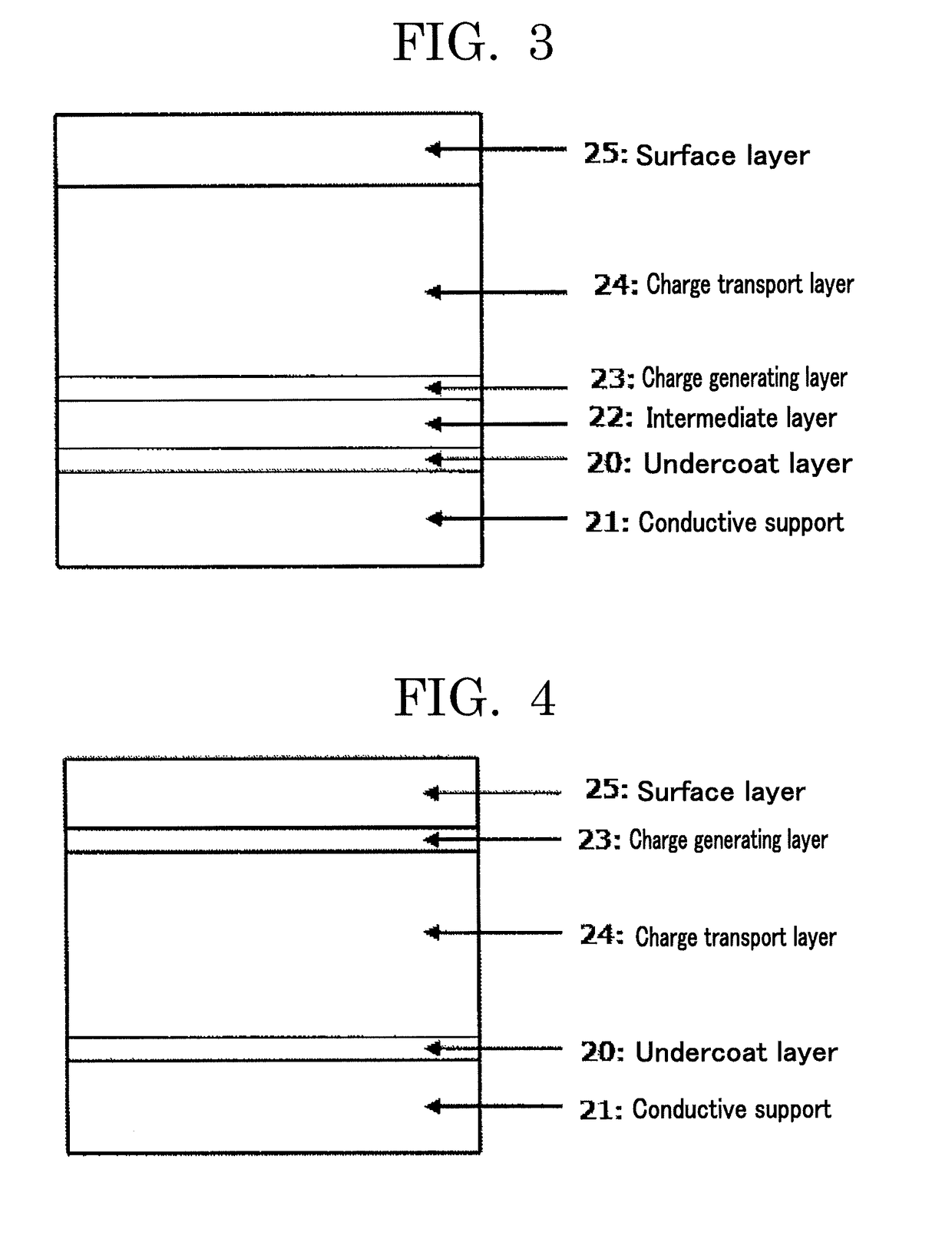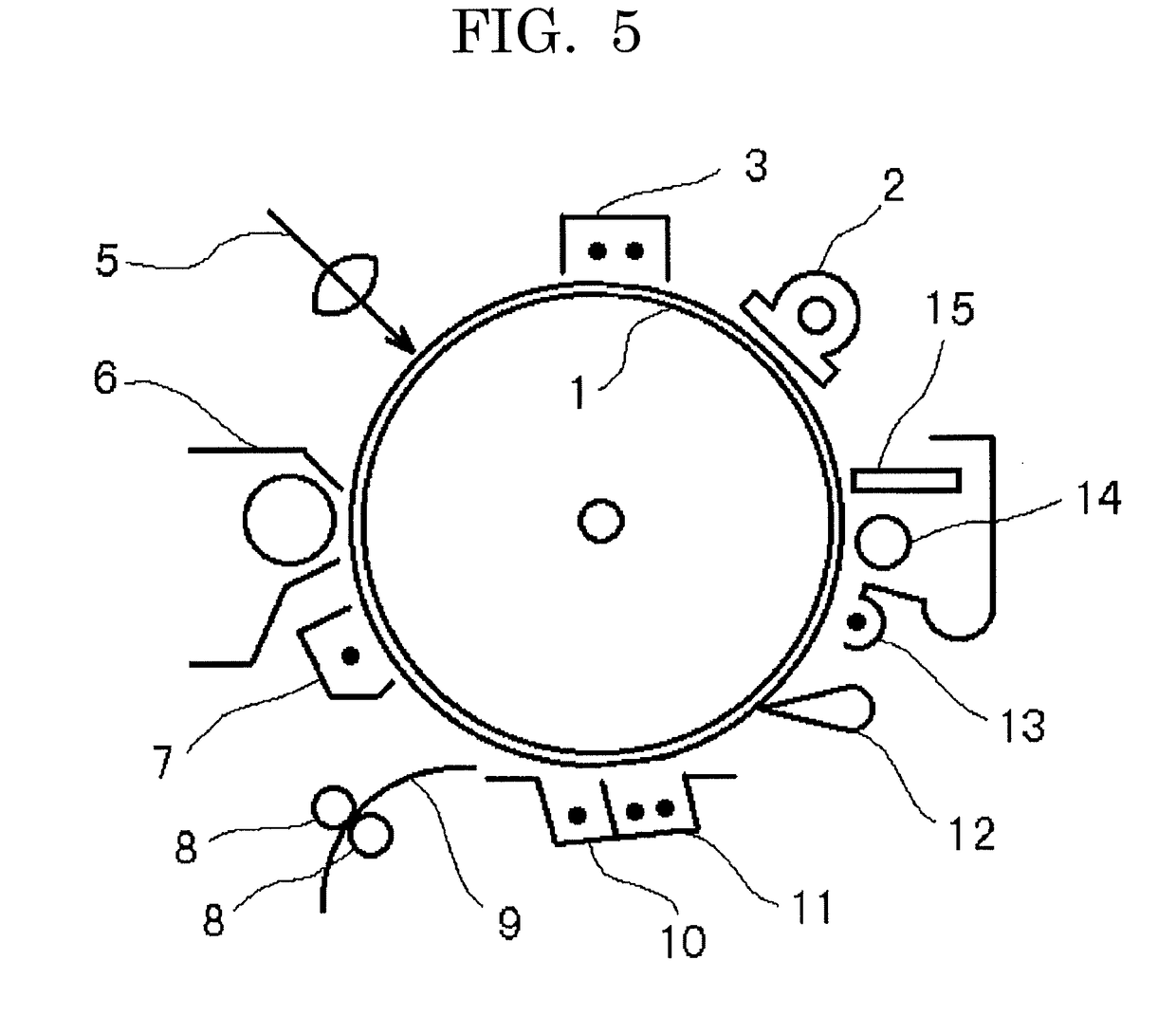Electrophotographic photoconductor, image forming apparatus, and process cartridge
a photoconductor and electrostatic technology, applied in the field of electrostatic photoconductor, image forming apparatus, process cartridge, etc., can solve the problems of electrostatic property change, electrostatic property change due, electrophotographic photoconductor charging property chang
- Summary
- Abstract
- Description
- Claims
- Application Information
AI Technical Summary
Benefits of technology
Problems solved by technology
Method used
Image
Examples
example 1
[0188]An electrophotographic photoconductor was obtained in the same manner as in Comparative Example 1, except that the undercoat layer coating liquid of Comparative Example 1 was changed to the composition described below.
[Undercoat Layer Coating Liquid]
[0189]Alkyd resin: 12 parts by mass[0190](BECKOSOL 1307-60-EL, available from DIC Corporation)[0191]Melamine resin: 8 parts by mass[0192](SUPER BECKAMINE G-821-60, available from DIC Corporation)[0193]Titanium oxide: 80 parts by mass[0194](PT-401, with a particle diameter of 70 nm and a powder resistance of 4.1×105 Ω·cm, available from Ishihara Sangyo Kaisha, Ltd.)[0195]4-Methyl salicylic acid (compound 1): 1.6 parts by mass[0196]Methyl ethyl ketone: 120 parts by mass
example 2
[0197]An electrophotographic photoconductor was obtained in the same manner as in Comparative Example 1, except that the undercoat layer coating liquid of Comparative Example 1 was changed to the composition described below.
[Undercoat Layer Coating Liquid]
[0198]Alkyd resin: 12 parts by mass[0199](BECKOSOL 1307-60-EL, available from DIC Corporation)[0200]Melamine resin: 8 parts by mass[0201](SUPER BECKAMINE G-821-60, available from DIC Corporation)[0202]Titanium oxide: 80 parts by mass[0203](PT-401, with a particle diameter of 70 nm and a powder resistance of 4.1×105 Ω·cm, available from Ishihara Sangyo Kaisha, Ltd.)[0204]3,5-Di-tert-butylsalicylic acid (compound 2): 1.6 parts by mass[0205]Methyl ethyl ketone: 120 parts by mass
example 3
[0209]An electrophotographic photoconductor was obtained in the same manner as in Example 1, except that titanium oxide in the undercoat layer coating liquid of Example 1 was changed to the material described below.[0210]Zinc oxide: 80 parts by mass[0211](FINEX-25, with a particle diameter of 60 nm and a powder resistance of 3.4×107 Ω·cm, available from Sakai Chemical Industry Co., Ltd.)
PUM
| Property | Measurement | Unit |
|---|---|---|
| Length | aaaaa | aaaaa |
| Length | aaaaa | aaaaa |
| Electric field strength | aaaaa | aaaaa |
Abstract
Description
Claims
Application Information
 Login to View More
Login to View More - R&D
- Intellectual Property
- Life Sciences
- Materials
- Tech Scout
- Unparalleled Data Quality
- Higher Quality Content
- 60% Fewer Hallucinations
Browse by: Latest US Patents, China's latest patents, Technical Efficacy Thesaurus, Application Domain, Technology Topic, Popular Technical Reports.
© 2025 PatSnap. All rights reserved.Legal|Privacy policy|Modern Slavery Act Transparency Statement|Sitemap|About US| Contact US: help@patsnap.com



